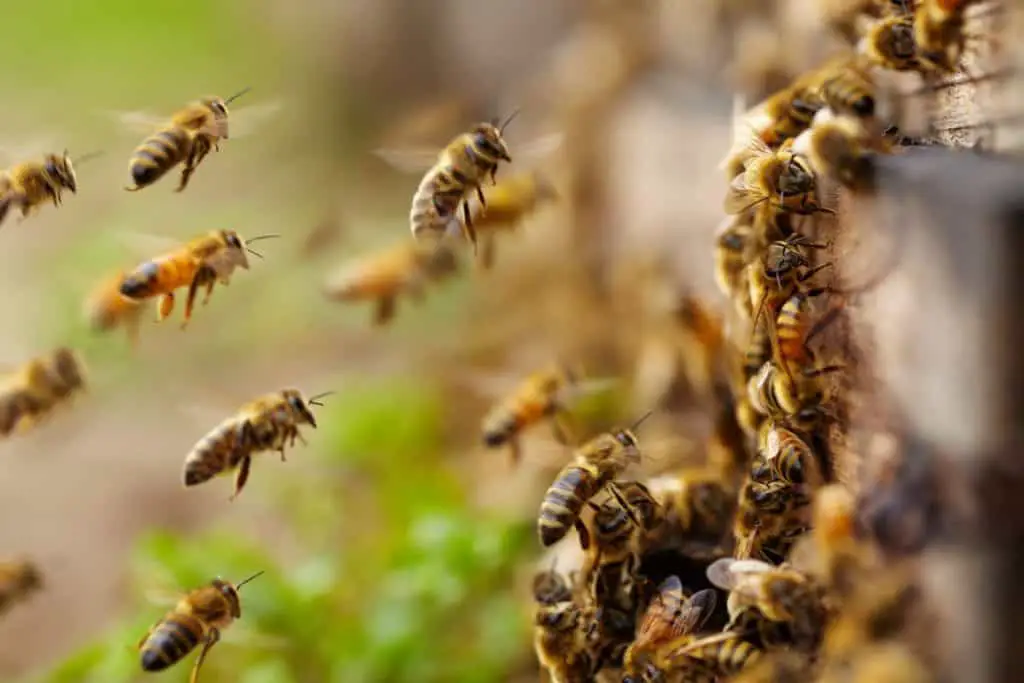It’s a common misconception that bees can only fly forwards – when in fact, they can actually fly backwards, too! This capability is thanks to their aerial navigation system, which allows them to map out their surroundings and navigate with precision.
When a bee wants to change direction, it simply adjusts the orientation of its wings.
This ability to fly backwards gives bees an advantage when collecting nectar from flowers, as they can easily reverse course if necessary.
It also comes in handy when they’re trying to avoid predators or escape from a hive that’s under attack.
How Are Bees Able To Fly In Any Direction
The key to this capability is the bee’s wings, which are specially adapted for flying in any direction.
Each wing is made up of two sections: the front wing and the hind wing. The front wing is shorter and narrower than the hind wing, and it’s attached to the body at a different angle.
This unique design allows bees to flap their wings independently of each other, which gives them more control over their flight. As a result, they can fly forwards, backwards, up, down, or even sideways!
Bees Wing Muscles
Bees have a fascinating method of flying that is unique among insects. Unlike birds and bats, bees have no muscles that attach directly to their wings.
Instead, their flight is powered by two large pairs of muscles in the thorax. The first pair of muscles, known as the “dorsoventral muscles“, run from the top to the bottom of the thorax.
When these muscles contract, they cause the body to squeeze top-to-bottom, which in turn causes the wings to flap upwards.
The second pair of muscles, known as the “dorsal-longitudinal muscle“, that runs from the front to the back of the thorax. This muscle contracts when the bee wants to fly downwards, providing lift and propulsion.
By contracting at different times, these two pairs of muscles allow bees to fly in any direction and in a smooth and efficient manner!
Related Article:

Do All Bees Have This Ability
Yes, all bees have the same wing structure that allows them to fly in direction. This capability is what makes bees such efficient pollinators.
However, Bees aren’t the only insects that have this ability – many other flying insects, such as wasps and flies, share this capability.
Does It Take More Energy For Bees To Fly Backwards?
Although bees can fly in any direction they actually spend the majority of their time flying forwards. In fact, it takes more energy for bees to fly backwards than it does for them to fly forwards.
When flying backwards, bees have to flap their wings at a higher frequency in order to achieve the same amount of thrust. This means that they burn through energy reserves more quickly when flying backwards.
What If You See A Bee Flying In Circles?
When a bee is flying, it uses visual cues to orient itself and navigate its surroundings. For example, the bee may use the position of the sun to determine which way is east or west.
However, if the sun is obscured by clouds, the bee may become disoriented. To regain its bearings, the bee will often fly in a figure-eight pattern until it can see the sun again.
Once the bee has a fix on the sun’s position, it can resume flying in a straight line. So, if you ever see a bee flying in circles, it’s probably just trying to get its bearings!
Conclusion
So as you can see, bees are actually quite skilled flyers! If you want to get a better idea of how bees do this then we recommended you try recording one then it’s trying to pollinate a flower.
Then all you need to do is play it back in slow motion and you can see how they move their wings to change direction.
Related Article:
